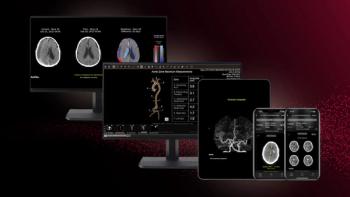
- Diagnostic Imaging Vol 32 No 9
- Volume 32
- Issue 9
Broad view of heart shows otherwise missed pathology
Almost a quarter of all patients in a recent study who underwent CT angiography had findings outside the heart and great vessels, leading to several serious diagnoses being missed.
Almost a quarter of all patients in a recent study who underwent CT angiography had findings outside the heart and great vessels, leading to several serious diagnoses being missed. A broad viewing approach led to more workup and follow-up imaging.
Out of 6920 patients, 1642 had one or more extracardiac findings for a total of 1901 findings in the broad viewing scheme. Of all the patients, 16.2% had a finding necessitating therapy, workup, or follow-up. By engaging in just the focused viewing scheme, most therapy (90.9%), workup (64.1%), and follow-up (51.2%) needs were missed (AJR 2010;195:143-148).
Use of the focused approach resulted in fewer false-positive diagnoses, but five malignant tumors of the breast, 88 lung infiltrates, 43 cases of adenopathy, two cases of polycystic kidney disease, one breast abscess, and one case of splenic flexure diverticulitis were missed.
Articles in this issue
about 15 years ago
Overlap shifts to help urgent findings communicationabout 15 years ago
Spectral CT IDs heart plaque better than conventionalabout 15 years ago
MRI, MRS scans reveal who will lose weightabout 15 years ago
Cardiac MRI shows heart adaptations in triathletesabout 15 years ago
Sheryl Crow teams up with breast cancer centerabout 15 years ago
New meaningful use rules spell opportunity for radiologyabout 15 years ago
Meaningful use: The government's billion dollar gift to radiologistsabout 15 years ago
MSCT moves ahead of DSA for peripheral arterial diseaseabout 15 years ago
CT and MRI drive awareness of vascular liver disordersabout 15 years ago
In a disaster, Homeland Security has plans for youNewsletter
Stay at the forefront of radiology with the Diagnostic Imaging newsletter, delivering the latest news, clinical insights, and imaging advancements for today’s radiologists.




























